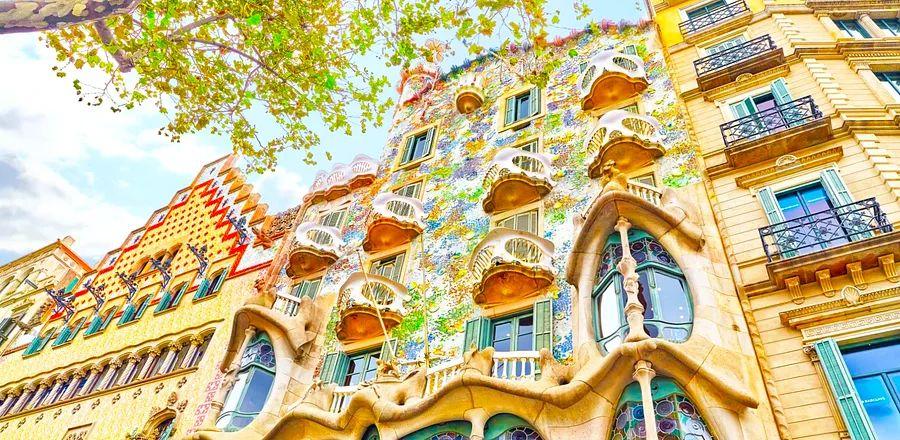How to Avoid Being Deceived by AI-Generated Travel Photos

In February, a Facebook user posted a picture of a Gaudí-inspired housefront from Barcelona in the Rick Steves’ Europe Facebook group, inquiring about its specific location. One user remarked, “Beautiful!” while another added, “The decoration is spectacular.” The building's intricate mosaics and wrought-iron balcony felt somewhat familiar, yet no one could identify it on a map.
No surprise there: As many observant Facebook users pointed out in the comments, the building was entirely fictional. The “photo” was actually an image created through artificial intelligence by Thierry Lechanteur, a photographer and AI consultant based in Liège, Belgium. “It is a creation, not a real place,” he clarified in an Instagram post. “It is neither a work of Gaudí, nor located in Barcelona or Liège.”
In recent years, artificial intelligence (AI) image generators have advanced rapidly. Utilizing data from millions of authentic photographs, powerful software like MidJourney and Stable Diffusion can transform written prompts, such as “the Eiffel Tower on a rainy day” or “a Kenyan savanna with a herd of elephants,” into photorealistic images suitable for travel brochures. This swift progress has made it increasingly challenging to differentiate their outputs from genuine photographs. They now integrate almost effortlessly into photo collections on platforms like Pinterest and Instagram, misleading unsuspecting travelers into searching for non-existent attractions and accommodations.
Nonetheless, while AI software has improved significantly, it is not flawless. If you zoom in on a dubious image, you may notice inconsistencies (or overly uniform elements) that could suggest the involvement of AI. Below, two experts provide their top recommendations for distinguishing AI-generated images from authentic ones.
Pay Attention to the Lines
“One of the key aspects I always examine in a photo are the lines,” explains Yasmina Stitou, a part-time photographer and founder of the AI-driven creative agency Casanegra. “In AI-generated images, lines often tend to merge together randomly.” She’s not just talking about walls or horizons; lines are everywhere: the ropes on a fence, the line created by eyeglasses across the brow, or the creases in a puffy jacket between folds. “If you trace a particular line, it’s likely to suddenly vanish or blend awkwardly with another,” she notes.
In the same vein, misaligned elements can also serve as a giveaway that AI is involved. “Images of busy streets with many buildings frequently exhibit similar line issues,” Stitou adds. “Doors and windows may not be perfectly aligned, street signs can appear artificially distorted, and buildings are often misaligned with the sky or ground.”

Photo credit: Claudio Poggio on Unsplash
Embracing the Beauty of Imperfections
Conversely, a travel photo that lacks any imperfections is also a warning sign. “I seek out the rawness in an image,” shares Rhiannon Taylor, a lifestyle photographer based in Melbourne. “Authentic images often carry traces of humanity or nature, much like a scar.” In landscape photos, she advises examining the foliage and water bodies. “Are there bruised or damaged leaves? Cobwebs, broken branches, or fish creating unexpected ripples? AI usually overlooks imperfections in nature,” she explains.
Taylor also pays attention to the interplay of light and shadows, which AI often generates uniformly in length and direction. “There’s typically something off-frame that causes irregularities in the shadows, like a chair outside a window or a branch blocking the sunlight,” she notes. Various light sources—such as skylights, lamps, or pendants—create shadows in different directions and hues, leading to a diverse range of shadow styles in a genuine photograph.

Image courtesy of Shutterstock
Adopt an Interior Designer's Perspective
While AI tools excel at generating images, they struggle with practical interior design. AI-created visuals of non-existent hotel rooms and fictional villa interiors often reveal subtle imperfections, such as:
- Stairs and doors that lead nowhere or are positioned in impossible locations, creating potential safety hazards
- Tables and chairs with either too many or too few legs, or designs that do not match
- Faucets, knobs, and light fixtures that appear randomly placed, floating without purpose, or designed in ways that hinder their functionality
- Patterns on rugs, wallpapers, and decorative moldings that lack symmetry and consistency
- Text on book covers, chalkboards, and screens that becomes unreadable gibberish
As an expert in interior photography, Taylor notes that the angles of many AI-generated interior images are nearly impossible to achieve in reality. “AI-generated interiors can appear very grand, resembling a furniture showroom,” she states. “Photographers would need ample space to stand far enough back to capture such a flawless shot, which is often not feasible. Achieving that perspective usually requires a wide-angle lens, which introduces distortion.”

Courtesy of Is It AI?
Technology Comes to the Rescue
Still have doubts? Save the image and conduct a reverse image search using Google. If the photo is genuine, Google will provide similar images taken by other photographers or direct you to the image’s original source (such as a tourism agency or hotel booking site). Conversely, if there are no similar results, the image is likely artificial.
Websites like Is It AI? and AI or Not are free to use and let you upload an image to assess the likelihood that it was created by AI or a human.
Ultimately, it all boils down to common sense. If a hotel room, street view, or breathtaking landscape appears too flawless, it’s likely not real.
Evaluation :
5/5



